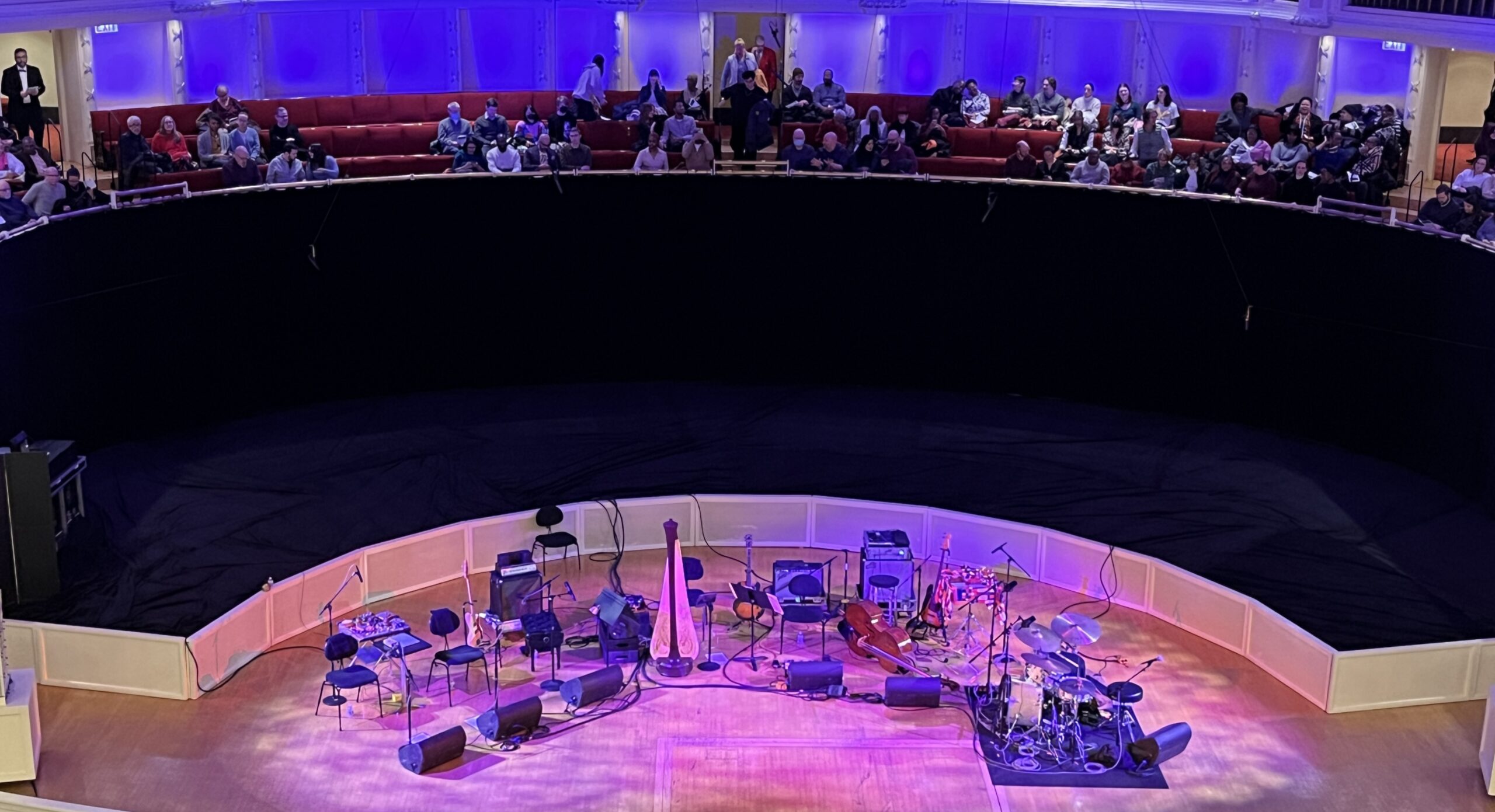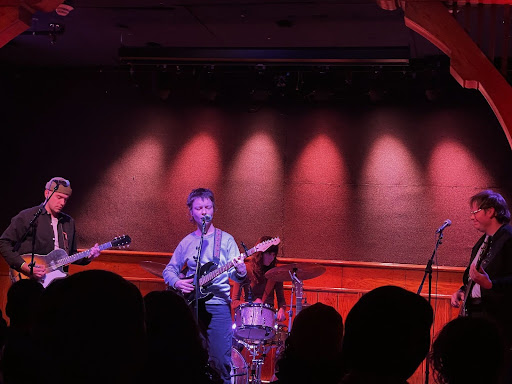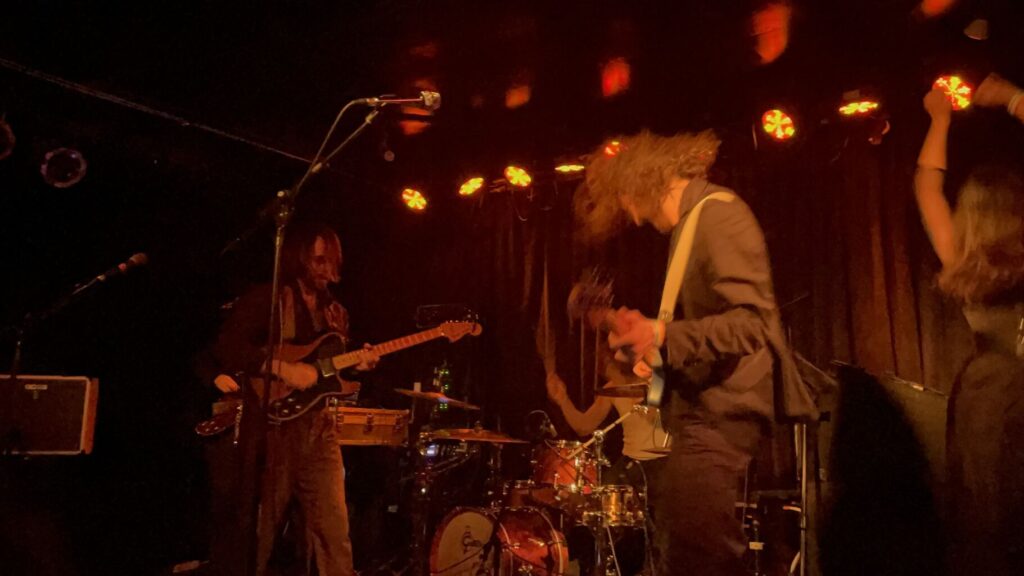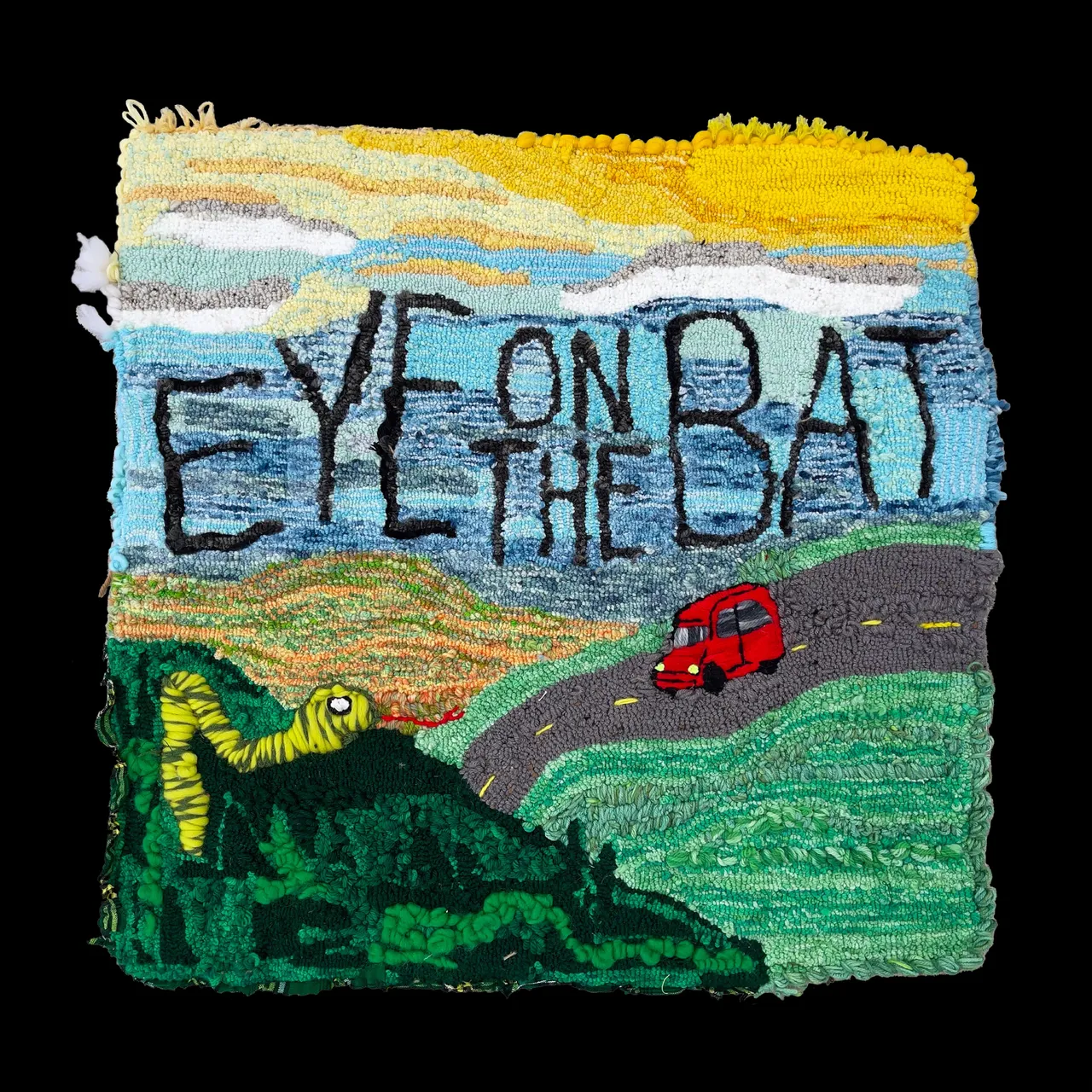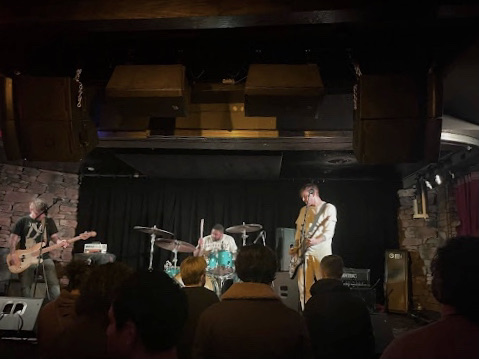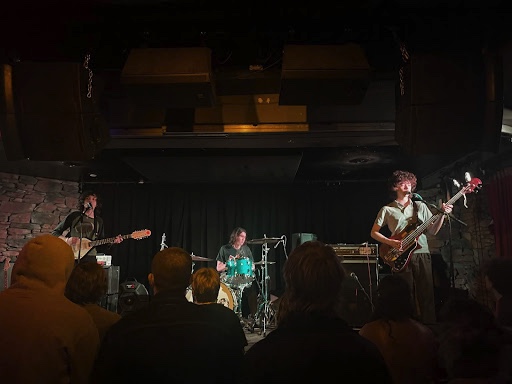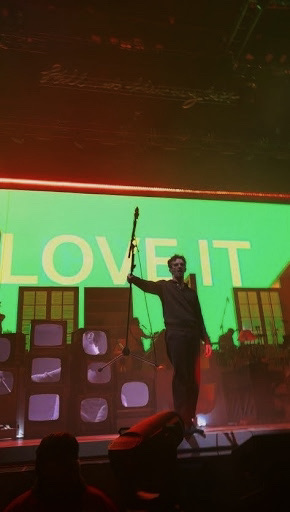CHICAGO | Eight years in the making. The creation of a masterful, career-defining record takes the same amount of love as care as raising a child. Our art should always be treated as our children, because otherwise, all we are left with is shards of ideas that are almost infinite. Makaya McCraven has found a way to create something that I believe is infinite —I feel it in my soul. Each track on the record is careful, yet decisive, so much to the point where it is relatable. With each listen, I see a little more of myself in the songs. Makaya McCraven’s 2022 album In These Times is the people’s child.
But I digress. This was never intended to be an album review (though at times it may seem that way based on how highly I speak of it). On January 19 2024, McCraven headlined a concert at Chicago’s own Symphony Center — home base of the world-class Chicago Symphony Orchestra and the same place where his latest record, In These Times, was recorded. With a completely stacked list of musicians accompanying him on that main-hall stage, all but one performer played on the record itself. The roster included Marquis Hill (trumpet), Greg Ward (alto saxophone), Brandee Younger (harp), Junius Paul (bass), Meshell Ndegeocello (vocals) and, of course, Makaya McCraven himself (drums). There was some major Chicago representation in that room, and as a self-proclaimed ride-or-die Chicagoan, it was invigorating.
The show opened with his original composition “Seventh String.” As the overhead lights dimmed the room turned a luscious pink color that I would only associate with an Azalea in bloom. The moment Greg Ward and Marquis Hill began playing the melody in unison was the moment I ascended. Combining their expert musicianship along with the state-of-the-art sound systems the hall is equipped with, they created some of the most ambrosian sonic flavors I have ever experienced. I am not exaggerating. I sat back further into my lower balcony aisle seat and felt a lightness in my soul. Every aspect of the compositional blend was mouth-watering.
After playing a couple original tunes, McCraven introduced Meshell Ndegeocello to join the ensemble. She placed a couple of items in the center of the stage; items of which I honestly could not distinguish from where I was sitting. She explained afterwards that the items were there to represent those who could not be with us at that moment, which was endearing. A little awkward, but it was authentic. Ndegeocello spoke briefly about being the most authentic version of yourself and unapologetically approaching your own life, which also spoke to me in a lot of ways.
The ensemble played an arrangement of TLC’s “Waterfalls” that, I think, spoke to everyone in that room. The first chord struck, and suddenly everyone around me shifted in their seats a bit. Once the chorus hit, it felt like each individual was the most present they had been yet. This programming choice was perfect for a few reasons, but primarily because, though McCraven makes music that people clearly adore, performing it in a setting like Symphony Center can lead to audience stuffiness. “Waterfalls” is a song we all know. Jazz, or whatever you want to call it now, is all about bringing the people together. It has always been by the people for the people, that is at least up until recent years where it has academicized itself into oblivion.
Playing a tune that everyone knows and loves in a space where it was not expected is pretty magical, and very smart at that. Ndegeocello asked the band to vamp the outro a few extra times, which, truthfully, seemed to create a little bit of unspoken tension on stage. The band cut out, and the audience was requested to sing the chorus out to end the tune. Having somewhere around 2,000 people singing “don’t go chasing waterfalls” was not something I went into the evening expecting to happen, but I am excruciatingly glad it did. Above all, it was a moment of community. I will never forget how I felt after the song ended and everyone around me was giggling to the person they were sitting next to. What a beautiful thing to be a part of.
Ndegeocello’s contributions to the set seemed to be controversial amongst the attendees I was able to debrief with after the concert. At times, it perhaps felt a little unorganized or less prepared than we were initially expecting. Again, maybe even a little awkward. In many ways, her presence was nostalgic for me. I saw a lot of myself in the way she presented herself up there. The poetry she wrote/performed was rich, and her voice was velvety like the olive sofa that sat in my living room growing up. Personally, I think that Meshell Ndegeocello stole the show.
Jazz prides itself on being a musical genre based on spontaneity, but how much of it is actually spontaneous? There is a song that is being performed and parameters that need to be met. Sure, boundaries are intended to be pushed for something spectacular to come from it, but at their core, musicians are perfectionists. Even the things that are defined to be spontaneous — like the notes a musician plays during their improvised solo — are limited in nature. Mathematically, there are only ‘x’ number combinations of notes, rhythms, styles, etc, that someone can bring to the table.
The one thing we all need in our lives is someone to rock the boat a little bit. Ndegeocello was moving around, rearranging parts of the texture to melt with other parts of the texture, and directly calling out names on stage, which scared the hell out of me from a musician’s point of view. The moment I realized I was scared was the moment I understood. The perfectionist part of my brain was going completely ballistic — every alarm and red flashing light in my mind was going off, and I realized I was thinking so much about what was going on that I wasn’t really listening. Sure, I was hearing, but I wasn’t quite understanding. After I took a step back and realized what I was thinking was more critical than it needed to be, I found it all to be enlightening. I broke off a piece of me that I was not proud to have existed and left it in that room. I learned that sometimes a step back is all you need to see the whole picture.
Another person that stole the show for me was Brandee Younger. I saw both her and McCraven play back-to-back sets at the Chicago Jazz Festival this past summer, and I have been in awe of her musicianship since. Makaya’s tune “Lullaby” began with an extensive harp introduction that left me, and everyone around me for that matter, stunned. I looked up at the ceiling and allowed the cadenza to remove me from my own body and back to the dust from which I came. It was magnificent. An that moment, I felt grateful for my ability to hear. There is nothing more grounding than a moment that makes you realize you have been taking something incredibly special for granted, and there is also nothing more special than feeling grounded from a single moment. Kind of like a snake eating its own tail sort of thing, but only more spiritual.
I had a few “moments” that night that I will take with me into everything I do in the future. Being able to sit in one of the greatest music halls in the world and experience the art that was dreamt up by McCraven himself felt explosive. Not in a destructive way, but more as a means of becoming whole. Makaya McCraven is easily one of my favorite artists alive today, and he has every reason to be proud of boundaries he continues to push musically. I look forward to whatever he, and every person who played that night, does next. I know down to my core it’ll be groundbreaking.
Photo and audio documented by Julia Soulsby.
